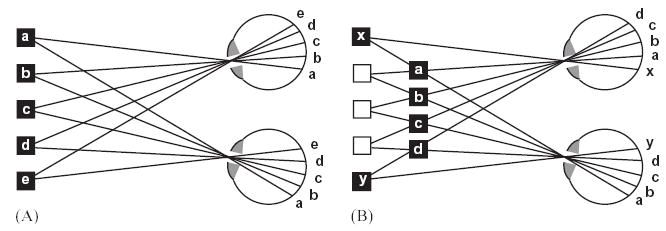Fig. 8.

The wallpaper illusion for a periodic stimulus. The alphabetical labels are not part of the stimulus, but indicate the matches made between the identical retinal stimuli. (A): matches are made at anatomically corresponding points on the retina; the stimulus is perceived in the fixation plane. (B): matches are made at non-corresponding retinal points; the stimulus is perceived in front of the fixation plane. If the stimulus were infinite in extent, this match would be equally valid physically. For the five-period stimulus shown, the edges convey the correct disparity. Thus, the match shown in (B) implies a jump in disparity (between x and a, and between d and y). This is why, when there is a sufficiently small number of periods present, the match in (A) is reliably perceived.
